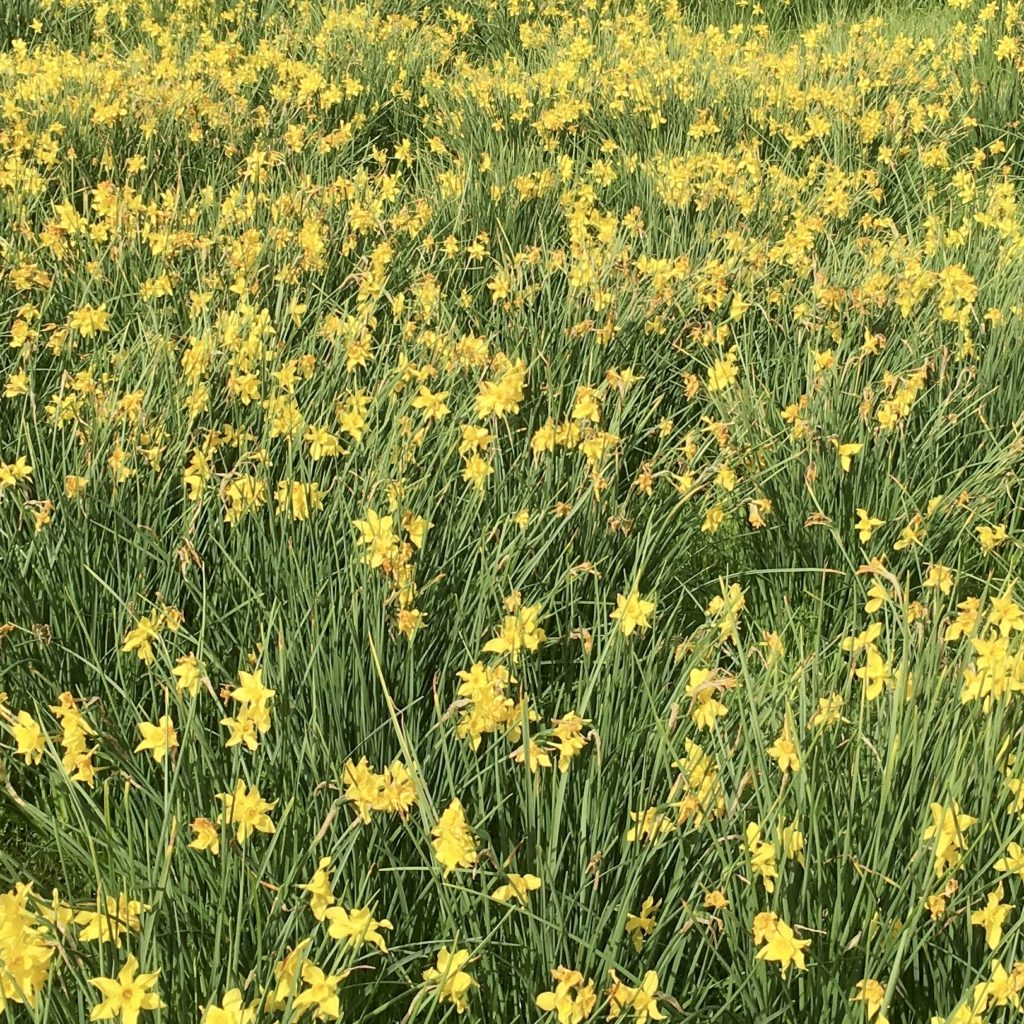
With the promise of the approaching spring, Frigid February summons the blooms of thousands upon thousands of white and yellow jonquils, quite literally covering the American South, as well as the hill above my parent’s home; just how long the flowers have graced this lovely hill, no one can say.
Each February the flower-adorned hill beckons the current generation of young children to “pick flowers” for mother. The results are quite predictable: younger children break each stem just below the flower, resulting in fistfuls of flowers whose stems could not reach the water in a vase, no matter how short the vase. With minimal instruction the maturing child quickly and easily learns to run their tiny fingers to the base of each stem, then make the break; the result is a bouquet of flowers quite beautiful enough for royalty.
I have always loved jonquils, to the point where I can now declare with confidence that jonquils are my favorite flower. Why? You ask.
Jonquils are beautiful; their multiple varieties complement one another in both form and color.
Jonquils are robust. Once established they are nearly impossible to destroy. The result is a plant, a beautiful flowering plant, that quite literally transcends human generations.
Jonquils mark house sites, homesteads. The farm upon which I was raised once hosted 27 house sites. Almost without fail, each of these sites can be identified each February solely by a beautiful display of jonquils; some sites boast hundreds or thousands of jonquils, while other sites proudly display a scant few. These flowers can be found in seemingly random locations: in the middle of the woods, gracing a wooded ridge top, complementing the space around a small pond, or scattered across the middle of a field. But when I see these flower beds, I know in my heart the locations are not random at all, but each bed, whether large or small, represents a place where a beloved family once lived, labored, laughed, and loved.
Perhaps they were wealthy, but more likely they were poor. A family of a bygone era, who eeked a living from the surrounding soil, experienced the joys of marriage, the blessings of family, along with the pain, sorrows, and heartaches that manage to find every family. Questions abound:
Were they a God-fearing couple?
Were they a happy family?
Were their children healthy?
What kind of adults did their children, their grandchildren, or even their great-grandchildren, become?
These questions are quite impossible to answer.
There is one thing we know: regardless of their social status, rich and poor alike, the young children bounded out of their parents’ homes each February and picked handfuls upon handfuls of these irresistible flowers. The first fistfuls of jonquils arrived home with insanely short stems, unfit for nearly any kind of display or use; then, following a wee bit of parental instruction, subsequent bouquets returned to the house with graceful, beautiful, long stems; bouquets befit for a king, for a queen — or perhaps even momma.

Love these entries!! Thanks for sharing your stories.
Thanks Marian!
Reminds me of metal detecting in Port Gibson! Love it
Thanks Emma, my friend!
So sweet and you describe them perfectly. Jonquils are also my favorite flowers and also remind me of my grandmother’s front yard! Have you read Wordsworth’s poem about them-I Wandered Lonely as a Cloud?
Kay, I hope you and Daryl are doing well. I had not read that poem, but looked it up and now I have. Thanks for taking the time to read my posts.